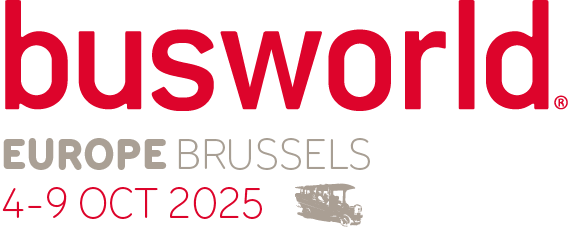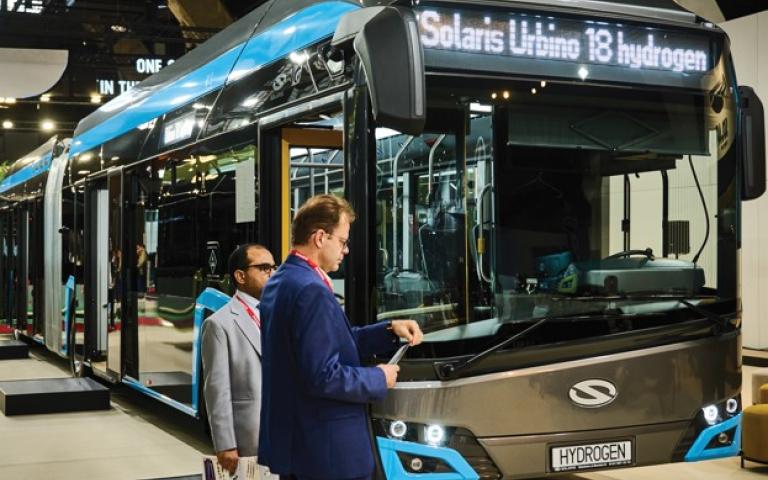CEO Javier Iriarte presented a numerical overview of where Solaris stands today. Compared to the first half of 2002, Solaris generated a growth of 45% in the same period of 2023. 77% of vehicles registered in 2023 were non-classically powered buses (electric, hydrogen, trolley or hybrid). This puts Solaris in the number one position for city buses in Europe with a market share of 16.4% new registrations.
In view of the electrification of inter-urban transport, Solaris founded a new division for this purpose. Another new development was a step across the ocean with a test in real operation in Vancouver, Canada, which showed that European technology performs equally well in North America.
A brand new charging station for electric buses was installed at the plant and a special, separate production hall was built for building hydrogen buses under the safest conditions.
Dariusz Michalak who is responsible for products explained why Solaris is exhibiting two new buses at Busworld. Firstly, materials and technology are evolving rapidly, so continuous improvements are imperative. Secondly, feedback from operators who have been driving electric for 10 years is a goldmine of information. But customer requirements also evolve. For instance, more space is often requested for wheelchairs or strollers in the rear of articulated buses, on longer lines people demand more seats, and the success of some lines requires articulated instead of solo buses.
New Urbino
Thanks to its high density batteries of up to 800 kWh, the new Solaris Urbino 18 electric now offers a driving range of over 600 km in SORT II, which is more than enough for an entire day's line-out. The elimination of the engine [MV1] freed up space for six extra seats, and more space on the roof allowed for more battery modules if required. The total capacity of the articulated bus is 145 passengers. Through standardisation, the production cost of the bus decreases, as does the operational cost at the operator. For charging, both upward and downward pantographs are available to be placed above the steering axle, as well as the connector plug at the front, rear, left or right of the bus. In order to be greener, Solaris does not source batteries from distant continents, they are made locally so that dependency is avoided and this supports the local economy.
For batteries, Solaris has set up a separate "Battery Hub" responsible for research, product development, operations and after sales.
The second innovation is the hydrogen bus in both 12-metre and 18-metre articulated versions. There are currently about 350 H² buses running in Europe. One in three of them carry the Solaris logo. The 18-metre articulated on the Busworld stand has a 100 kW fuel cell and eight hydrogen tanks for a total of 50 kg of hydrogen. Batteries support the departure and are powered in part by recuperating energy when braking. Again, the bus can travel over 600 km on a single refuelling, which is more than enough for a full day's operation. Apart from the 140 already delivered models, another 450 to be delivered hydrogen buses are in the order book for the next two years.
To conclude, the CEO again underlined Solaris' sustainability: 100% power from renewable sources for production, 58% carbon footprint reduction, 23% savings on other energy consumption and 69% of used supplies are sourced locally.
[MV1]Volgens mij moet "motortoren"=>"motortoeren" zijn?

